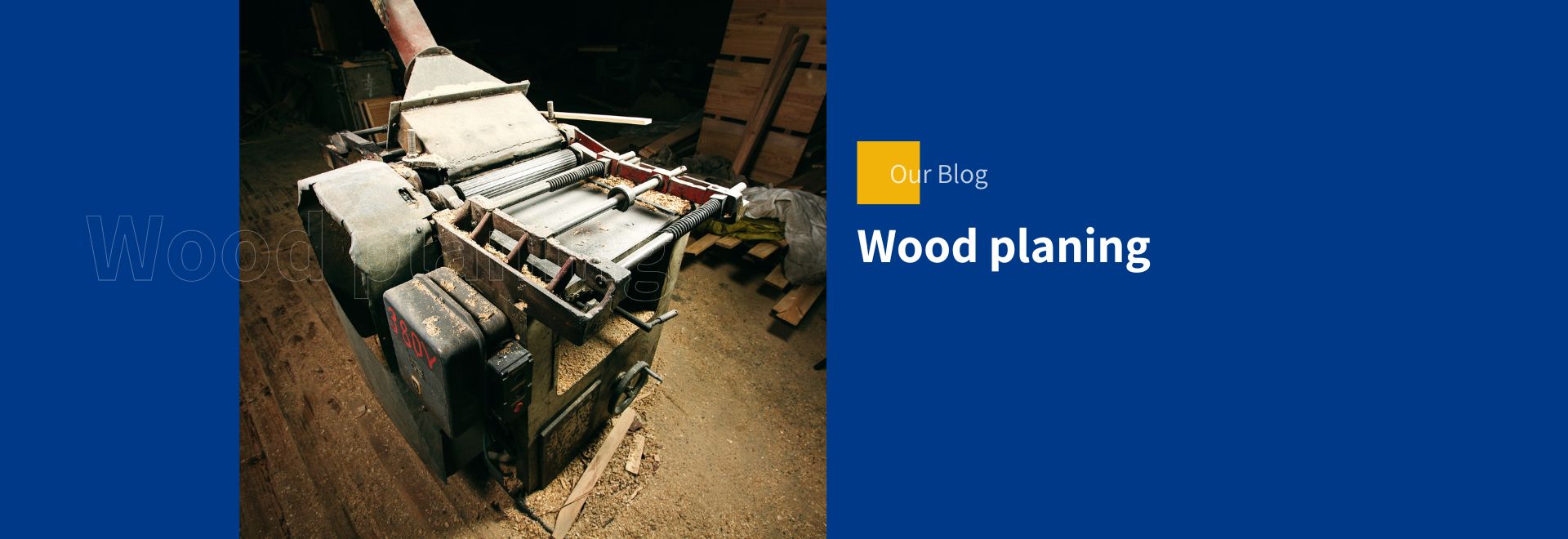
Wood planing is one of the fundamental processes in carpentry and woodworking. This technique allows for smooth, even, and flawless surfaces, enhancing both the aesthetic and functional qualities of the material.
But how does planing work? What machines are used? Let’s find out!
Indice
- What is wood planing?
- What is the purpose of wood planing?<
- What does wood planing involve?
- What machines are used for planing wood?
- How does a planer work?
- What materials can be planed besides wood?
What is wood planing?
Planing is a mechanical process that removes the surface layer of rough wood to achieve a smooth and even finish.
This step is essential to prepare the wood for further treatments, such as painting, gluing, or assembling furniture and structures.
What is the purpose of wood planing?
Have you ever wondered why rough wood cannot be used directly in furniture production or structural elements?
Here are some of the main functions of planing:
- Eliminating irregularities: The surface of rough wood can have natural defects, knots, or unevenness.
- Improving workability: Well-planed wood makes subsequent operations like gluing or assembly easier.
- Ensuring dimensional accuracy: Planing allows for uniform thickness and precise dimensions.
- Preparing wood for finishing: Paints, oils, and waxes adhere better to smooth and even surfaces.
What does wood planing involve?
The planing process involves gradually removing thin layers of wood using sharp blades mounted on specialized machines.
This process can be performed in different ways:
- By hand, using a manual plane, ideal for artisanal work and fine details.
- By machine, using professional planers that ensure speed, precision, and uniform results.
What machines are used for planing wood?
In woodworking, several types of machines are used for planing. The main ones include:
- Jointer planers: Used to flatten one face of the wood, removing any warping or irregularities.
- Thickness planers: Used to achieve uniform thickness and precise dimensions.
- Combination jointer-thickness planers: Versatile machines that combine both functions, ideal for woodworking shops and the industry.
How does a planer work?
Modern planers are equipped with sharp blades that rotate at high speed to remove thin layers of material.
Here’s the process in a few simple steps:
- The wood is positioned securely on the machine.
- The planer’s blades begin rotating, cutting the wood in a gradual and controlled manner.
- The piece moves forward, either manually or via the machine’s automatic feed system.
- The wood exits with a smooth and uniform surface, ready for further processing.
Using a high-quality planer ensures efficient processing, reducing waste and optimizing production time.
What materials can be planed besides wood?
In addition to wood, various materials can be planed, though specific machines and precautions are required.
Here are some examples:
- MDF (Medium Density Fiberboard)
MDF is a wood-derived material made from compressed wood fibers and resins. It can be planed, but with care:
✅ It is less resistant than solid wood, making it prone to chipping.
✅ Planing should be done with very sharp blades to avoid splintering.
✅ Using a thickness planer with controlled feed is recommended.
- Plywood
Plywood can also be planed, but with some precautions:
✅ Since it consists of thin layers of glued wood, aggressive planing may cause layer separation.
✅ A light planing pass is recommended to maintain the panel’s structure.
- Particleboard
Particleboard is another wood-derived material but is very fragile:
✅ It can be planed, but if the blade isn’t perfectly sharp, it may crumble.
✅ Sanding is often preferred for surface finishing.
- Plastic and Composite Materials
Some types of rigid plastics or composites (like Corian) can be processed with specialized planers:
✅ Blades with specific angles are used to avoid burrs.
✅ A steady feed rate is crucial to prevent overheating.
- Aluminum and Soft Metals
In industrial settings, specialized planers are used to work materials such as aluminum or copper: ✅ CNC machines or metal planers with dedicated blades are required. ✅ The process runs at lower speeds than wood planing to prevent overheating.
—
Wood planing is an essential step to obtain workable, precise, and production-ready materials. Choosing the right machines is crucial to ensuring efficiency and high-quality results.


